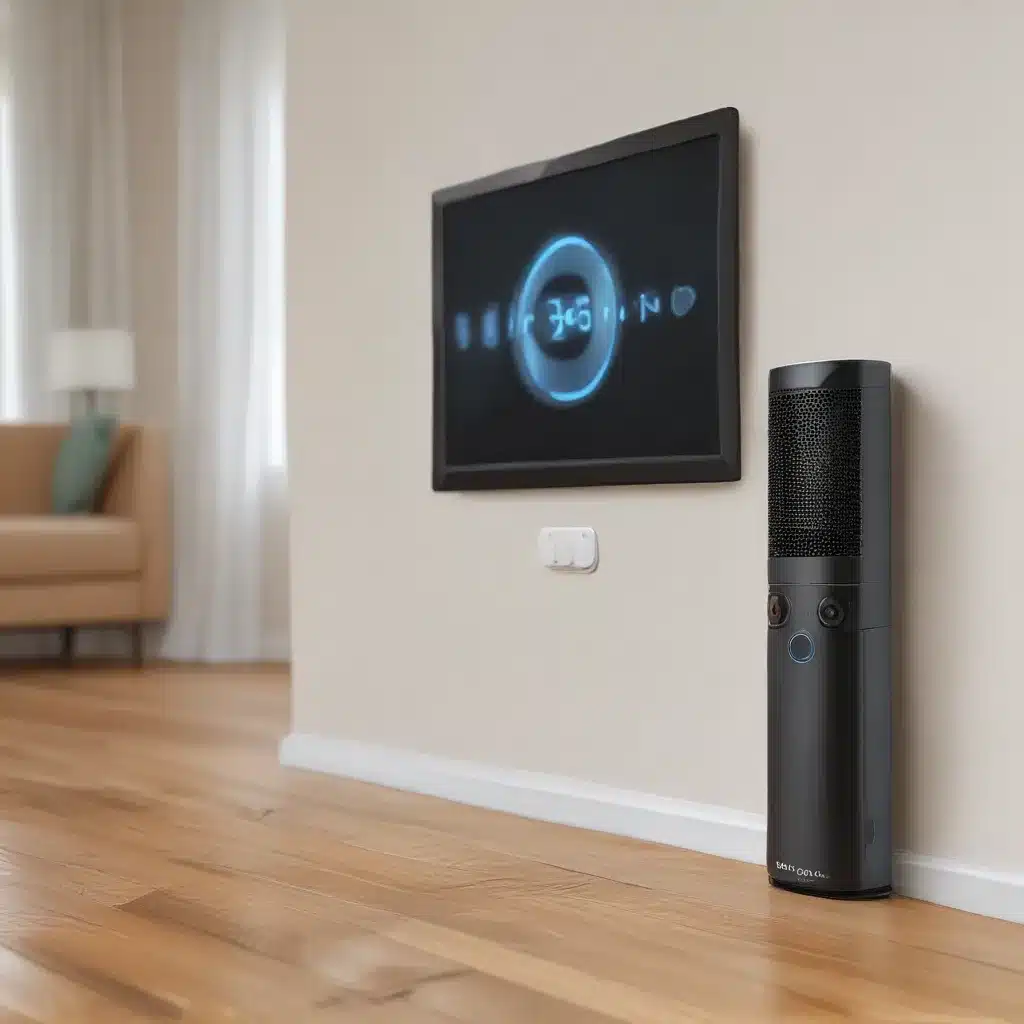
Taking Back Control of My Smart Home
As I sit in my living room, I can’t help but feel a growing sense of discomfort. My smart home setup, once a marvel of modern convenience, has become a constant source of unease. You see, I’m the kind of person who values their privacy – and the more I learn about how these connected devices operate, the more I realize just how much of my personal information is being funneled into the cloud.
Gone are the days when I could casually chat with my partner without worrying about targeted ads popping up for the very topics we discussed. And the thought of my home’s security cameras and microphones potentially being accessed by unknown parties? It’s enough to make my skin crawl. I knew I had to find a solution, one that would allow me to enjoy the benefits of a smart home without sacrificing my right to digital privacy.
Enter the World of Local Control
As I delved deeper into the world of home automation, I stumbled upon a revelation: there is a way to achieve the convenience of voice control while keeping everything local and offline. It’s called home assistant, and it’s a game-changer for the privacy-conscious homeowner.
Home Assistant is an open-source home automation platform that puts you, the user, in the driver’s seat. Unlike the big-name voice assistants that funnel your data to the cloud, Home Assistant operates entirely on your local network, processing commands and controlling your smart devices without ever leaving the confines of your home.
The more I learned about it, the more excited I became. No more Alexa or Google Home eavesdropping on my conversations – just me, my voice, and my devices, working in perfect harmony. And the best part? Home Assistant is completely free to use, with a thriving community of tinkerers and DIY enthusiasts ready to lend a hand.
Building My Voice-Controlled Smart Home
With newfound determination, I set out to transform my home into a fully voice-controlled sanctuary. The first step was to upgrade my aging smart home setup, swapping out the cloud-based devices for a more privacy-focused approach.
I started by replacing my Alexa-enabled smart plugs and lightbulbs with Home Assistant-compatible alternatives. These devices communicate directly with the Home Assistant server running on a Raspberry Pi in my home office, ensuring that all my commands and data stay safely within the confines of my local network.
Next, I tackled the audio side of things. I’d heard about the benefits of using multiple microphones for whole-house voice control, so I invested in a ReSpeaker 4-Mic Array to connect to my Home Assistant server. This discrete, ceiling-mounted setup allows me to issue voice commands from anywhere in my home, without the need for bulky smart speakers or the risk of cloud-based eavesdropping.
To tie it all together, I configured Home Assistant’s built-in voice assistant, which seamlessly integrates with my smart home devices. Now, with a simple “Hey, Home Assistant,” I can control my lights, adjust the thermostat, or even play my favorite music – all without lifting a finger or compromising my privacy.
Overcoming the Challenges
Of course, transitioning to a truly local smart home wasn’t without its challenges. As I delved into the world of Home Assistant, I quickly realized that the level of customization and configuration required was far beyond what I was used to with my previous plug-and-play setup.
There were times when I felt like throwing in the towel, overwhelmed by the seemingly endless array of integrations, automations, and custom scripts. But I persevered, tapping into the wealth of resources available in the Home Assistant community, from detailed documentation to helpful forums and Discord channels.
And let me tell you, the effort was well worth it. As I fine-tuned my voice commands and tweaked my automations, I began to truly appreciate the power and flexibility of this open-source platform. No longer was I beholden to the whims of tech giants – I was in complete control of my smart home, with the peace of mind that comes from knowing my data and conversations were staying right where they belonged: under my roof.
The Future of Voice Control
As I look to the future, I can’t help but feel excited about the possibilities that lie ahead for voice-controlled smart homes. While the current open-source solutions may not yet match the polished user experience of the big tech offerings, I’m confident that the continued innovation and dedication of the Home Assistant community will close that gap sooner rather than later.
In fact, I’ve already caught wind of promising developments, like the Mycroft AI project, which aims to bring high-quality, privacy-focused voice control to the masses. And with the recent advancements in Mozilla’s DeepSpeech speech recognition engine, I’m optimistic that the days of relying on cloud-based services for voice commands may be numbered.
As for me, I’ll continue to be an avid supporter of the Home Assistant movement, tinkering and tweaking my setup to push the boundaries of what’s possible. Because at the end of the day, what’s more important than having complete control over the technology in our homes? It’s a battle worth fighting, and one I’m more than happy to take on.
So if you, like me, are tired of living in a smart home that’s anything but smart when it comes to privacy, I encourage you to explore the world of Home Assistant and local voice control. It may take some effort, but the rewards are well worth it – a truly personalized, secure, and future-proof smart home that puts you, the user, back in the driver’s seat.












